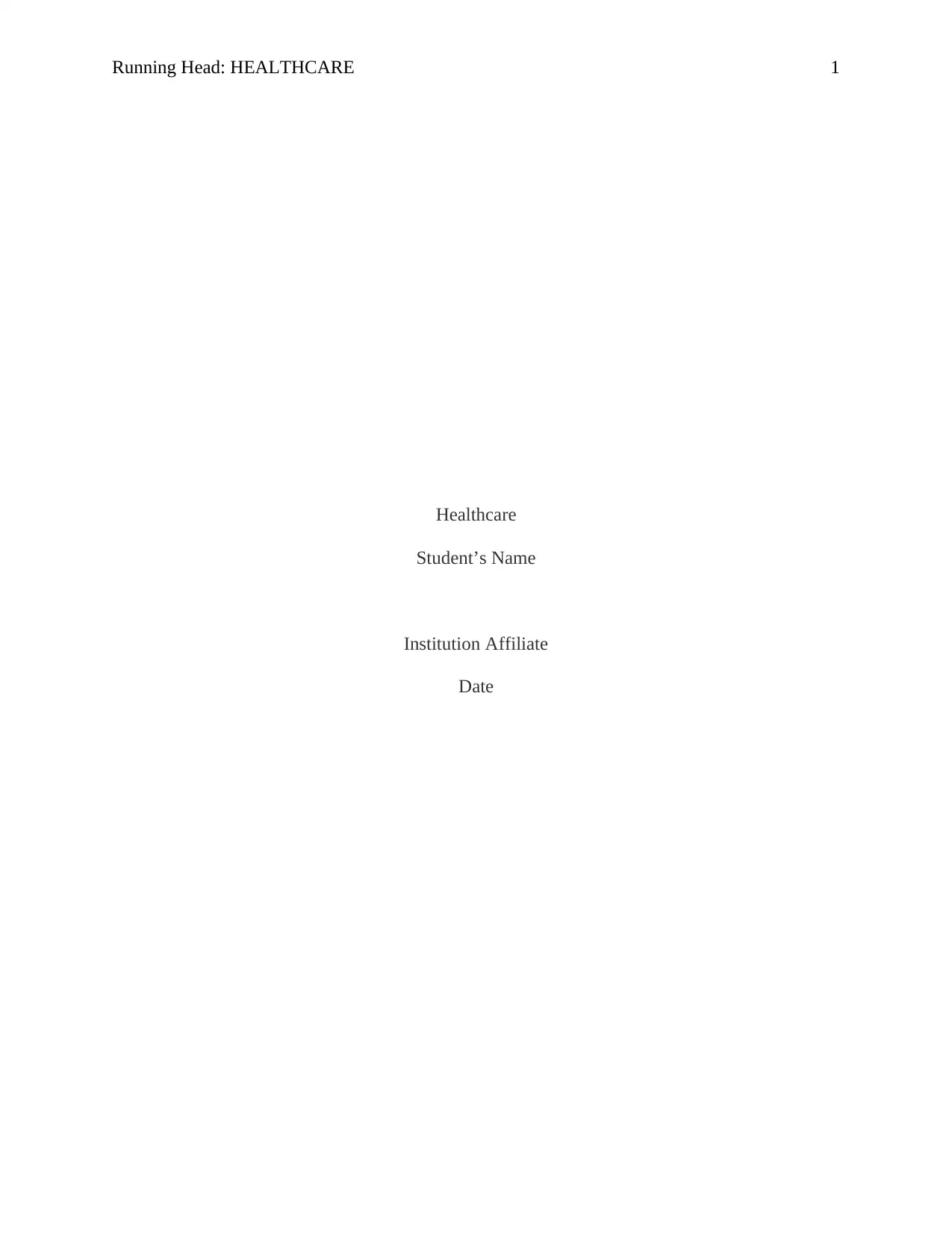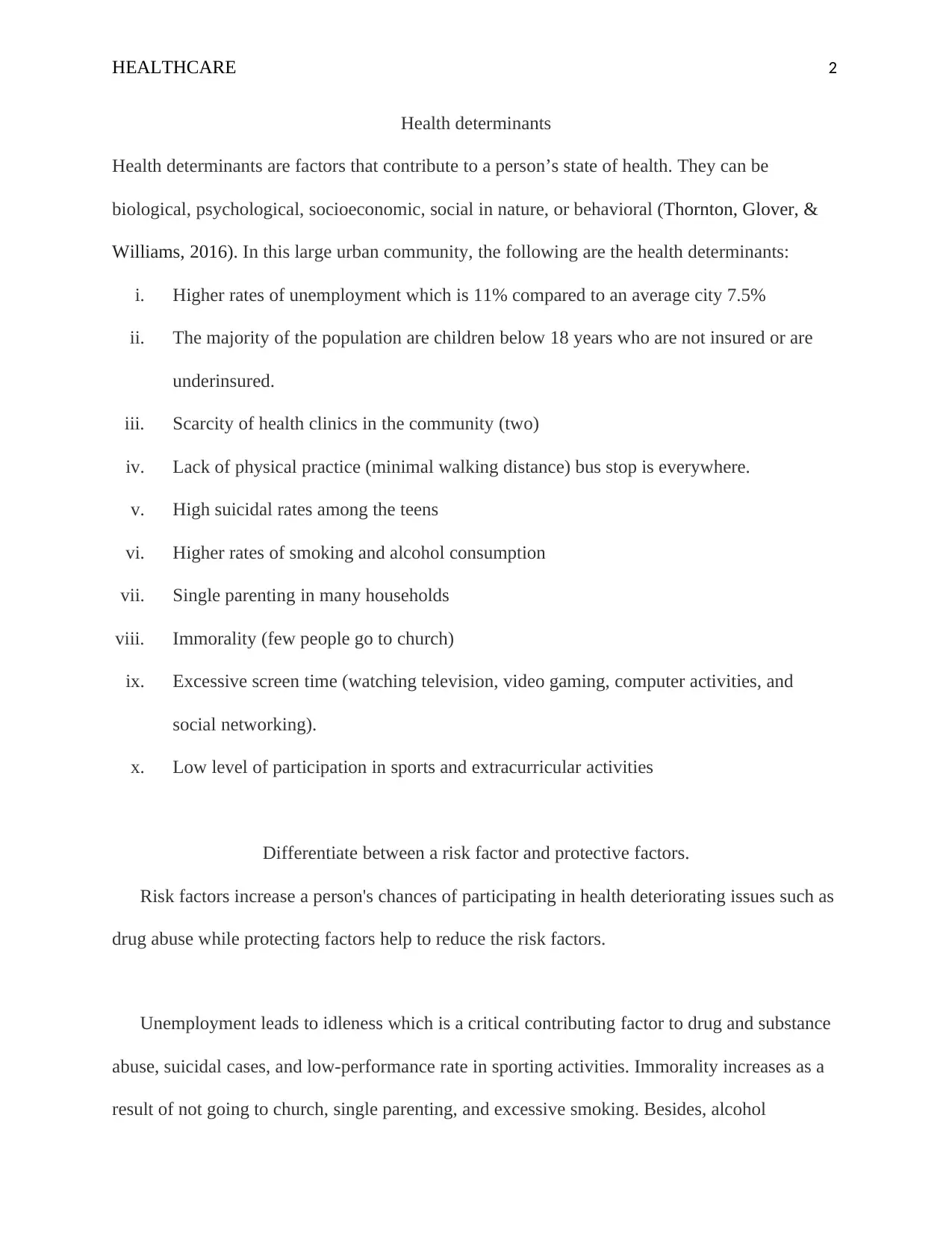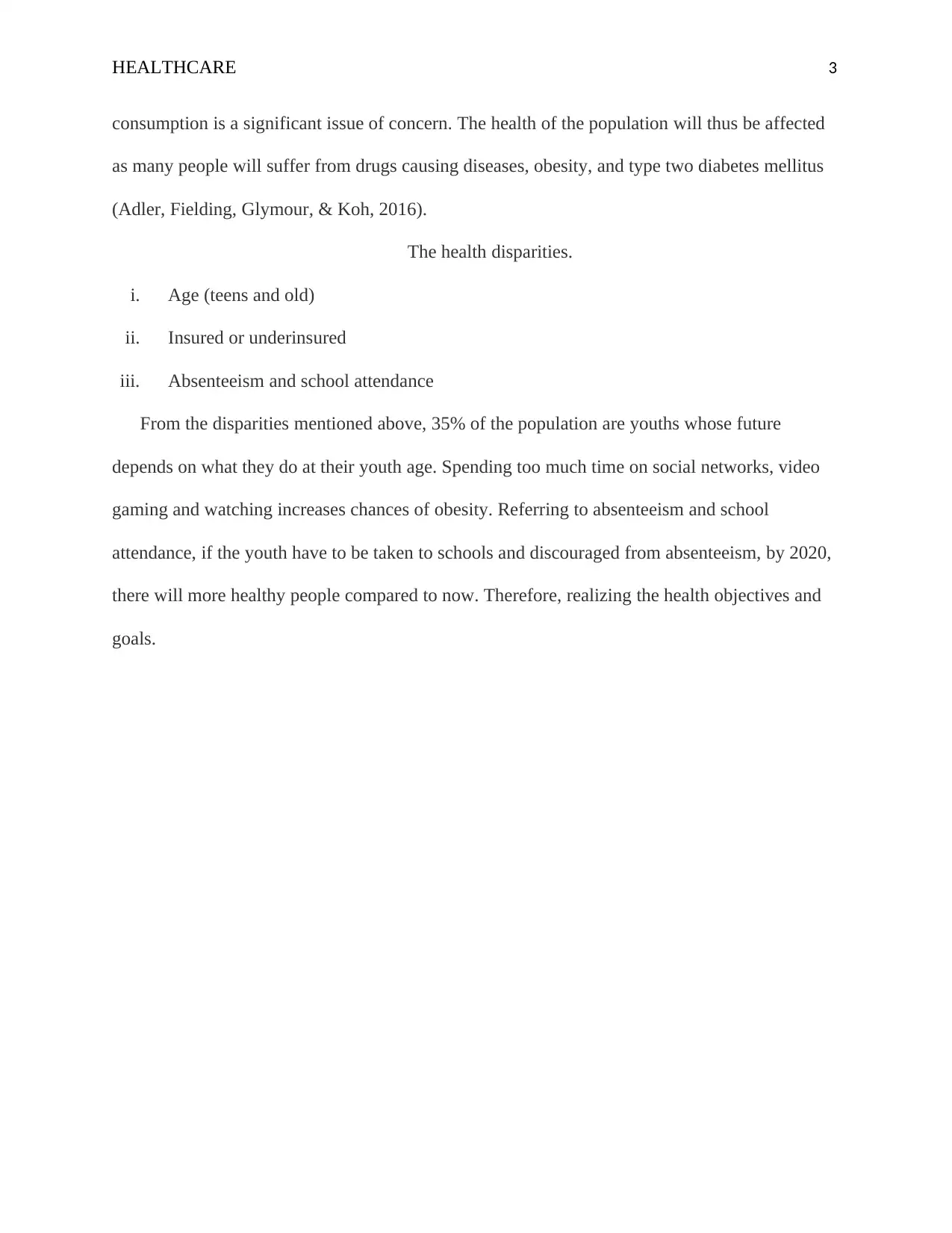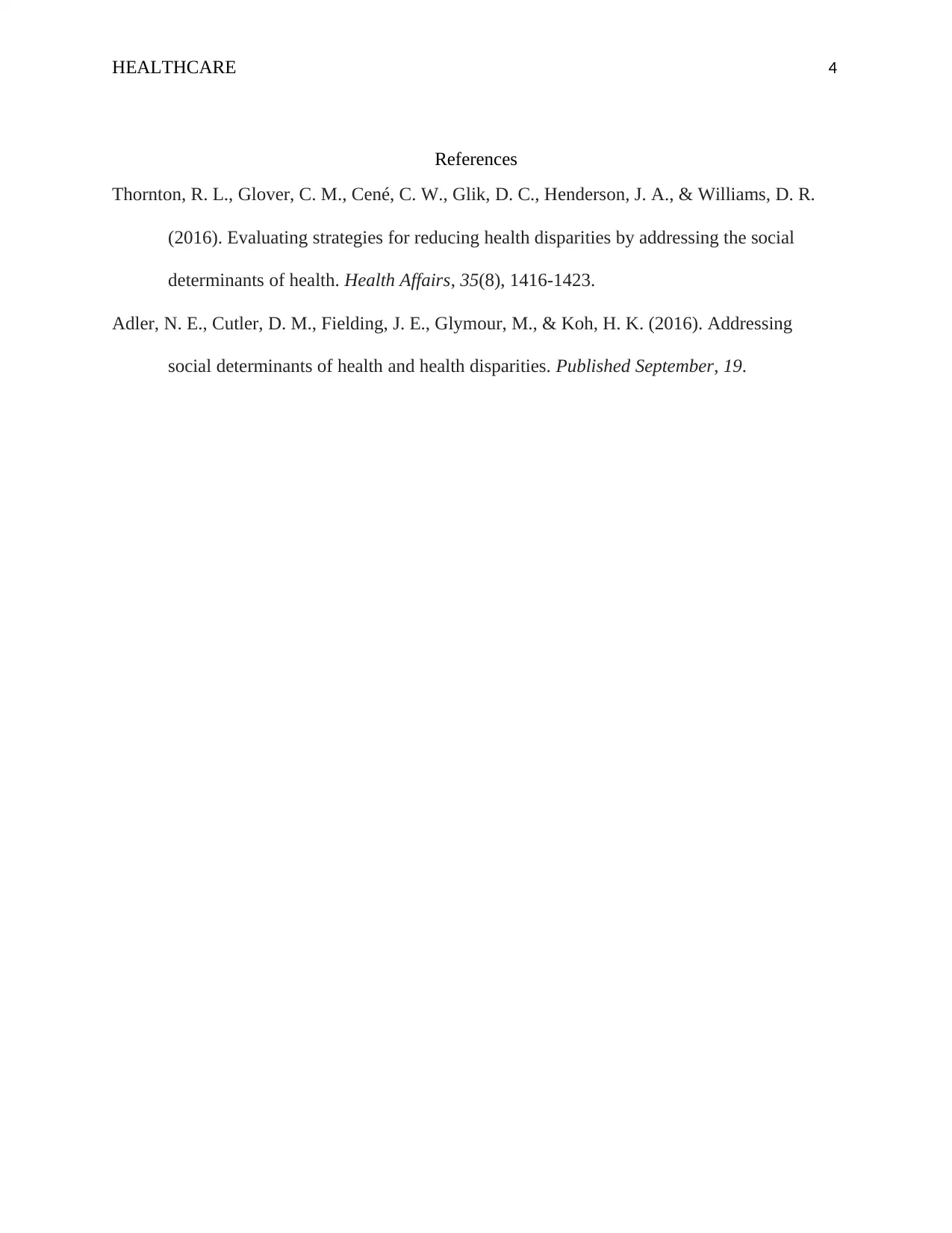Population-Based Nursing: Community Assessment of Health Determinants
VerifiedAdded on 2022/10/06
|4
|514
|12
Homework Assignment
AI Summary
This assignment presents a community assessment focusing on a large urban area in a Midwestern state, analyzing health determinants and disparities. The assessment highlights various factors, including high unemployment rates, a large population of uninsured children, limited access to healthcare facilities, and lifestyle issues such as high rates of teen suicide, smoking, and alcohol consumption. The student differentiates between risk and protective factors, examining how these determinants affect the population's health, leading to potential diseases and health issues. Disparities related to age, insurance status, and school attendance are also considered, emphasizing the need for interventions. The student provides references to support the analysis.
1 out of 4







![[object Object]](/_next/static/media/star-bottom.7253800d.svg)